How do you keep a wet room dry? 7 tips for a slip-proof shower room
Wet rooms have suffered bad press in the past, thanks to poor design – our top tips will help keep your space fresh and dry
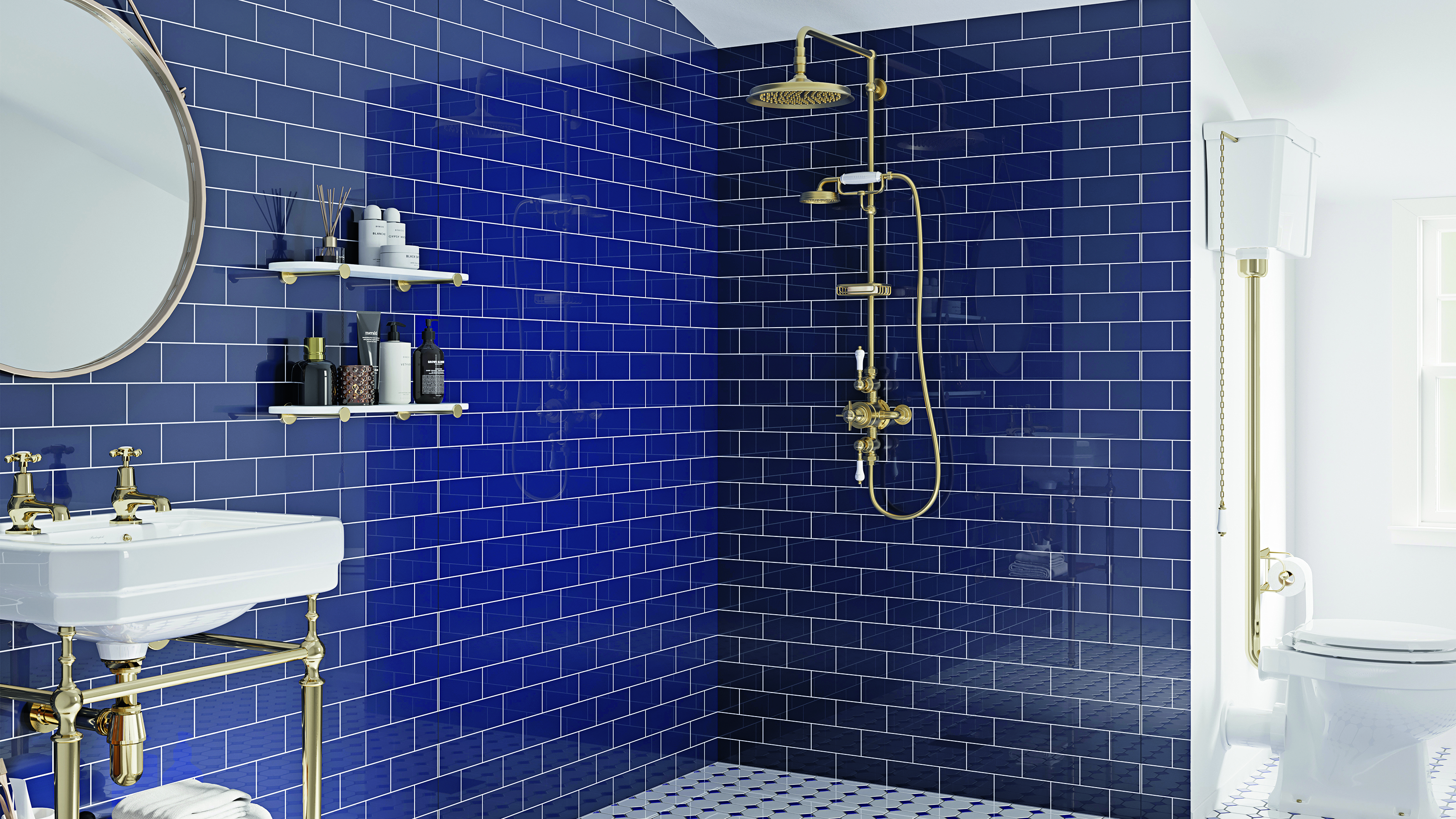

Understanding how to keep a wet room dry is key to the success of this type of space. While wet rooms come with so many benefits, unless their design and installation is spot on, they can lead to all kinds of daily frustrations.
Wet room ideas come in all shapes and sizes, and are equally as suitable for small ensuites as they are for larger family bathrooms – but keeping the water produced by the shower from soaking the entire space can be tricky without the right know-how.
We reached out to the experts for their top tips on how to ensure the water in a wet room stays where you want it.
1. Good waterproofing is everything
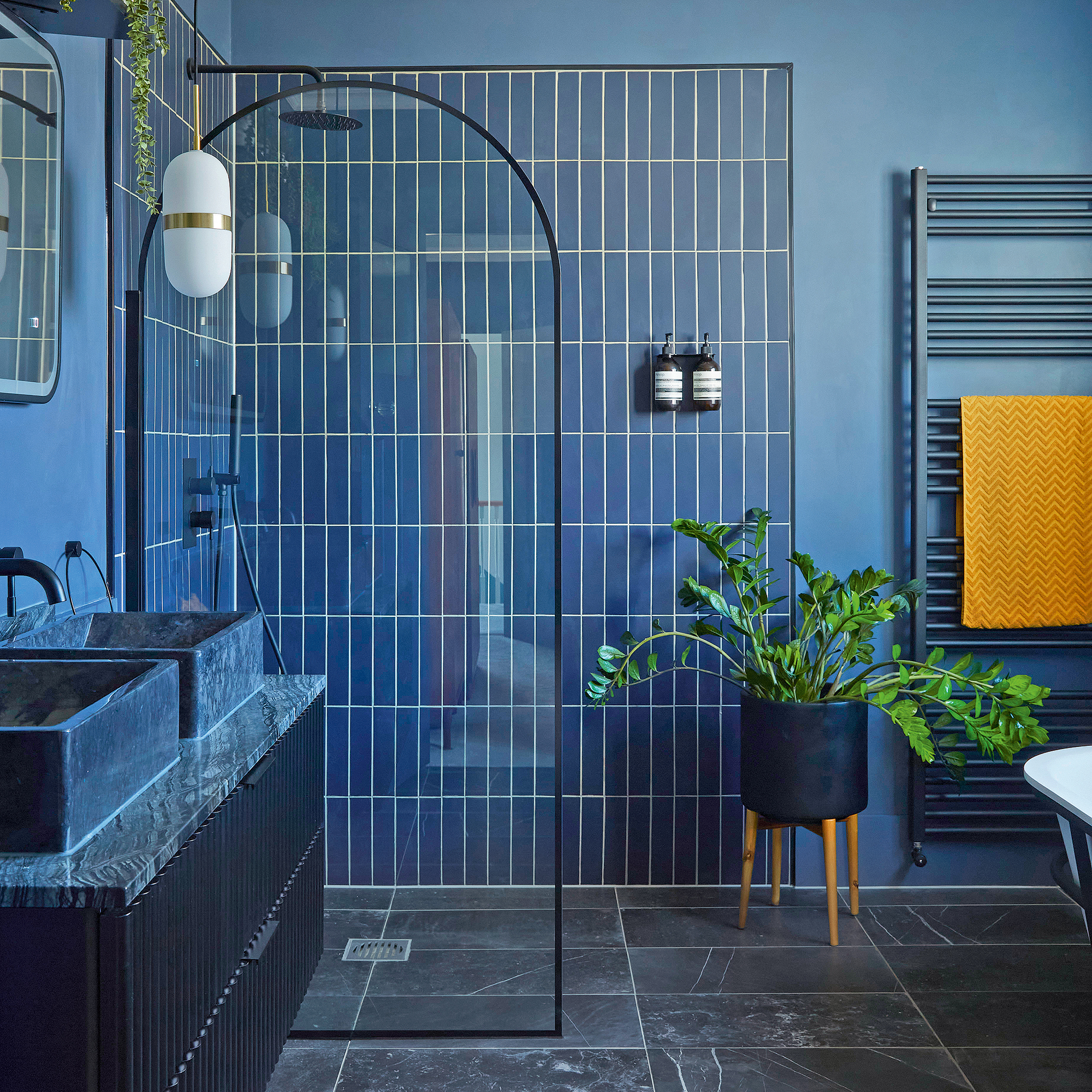
Due to questionable installation and design, for a while, many people were left wondering 'is a shower room the new wet room?' Thankfully, there are ways to avoid any issues with leaking and flooding and the number one secret lies in the waterproofing of the floor and walls.
'Tanking (waterproofing) your wet room is essential,' explains Shamila Iqbal, director at Bathroom Mountain. 'This should be done with specialist waterproof boarding, such as Hardie Backer Boards, or a suitable liquid membrane system.'
Kerry Hale, bathroom expert at Mira Showers, further explains why tanking is so important.
'Mould is a common problem, especially in the UK where our damp climate hardly helps matters,' says Kerry. 'Water can get underneath the tiles and penetrate the wood, plaster or brick underneath. Waterproofing your entire bathroom – or tanking, as it’s sometimes referred to – will create a barrier between the top layer and the wall, keeping water away. This also means that water will be unable to escape downwards, stopping any leaks through the ceilings of the rooms below your bathroom.'
2. Ensure water can drain away properly
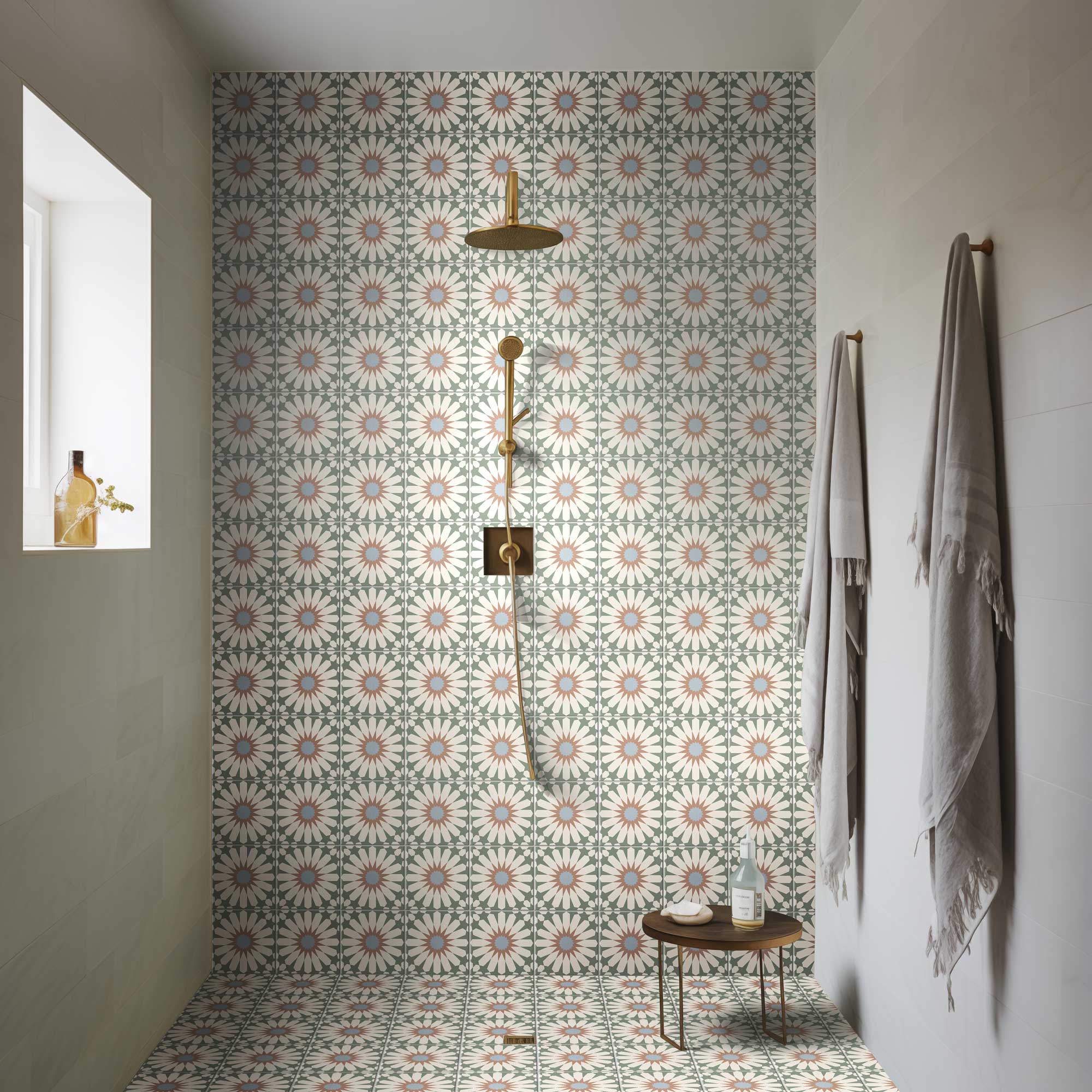
The other important thing to get right when it comes to wet room design is the floor construction – water needs to be able to run off and away down the drain quickly if you want to avoid flooding or pools of water lingering. It will also mean you don't have to get rid of mould later down the line.
'The shower floor should be sufficiently sloped towards the drainage point to ensure water can run-off,' explains Nicholas Cunild, managing director at Matki.
'The floor needs to be laid with a gradual slope towards the drain to ensure water naturally flows away,' picks up Shamila Iqbal. 'This is typically between 1.5 and 2%.
'Pre-formed wet room shower trays with built-in gradients are a good way to help ensure you get good drainage as they are supplied with a gradient and, unlike traditional shower trays, don’t have a lip so sit flush with the floor.
'Wet rooms typically feature a central or offset drain, although linear (channel) drains are also becoming popular,' further explains Shamila. 'Linear drains are installed along one side of wet room and help to avoid issues that can be caused by the positioning of floor joists. They include multiple outlets along their length so water can exit from any of these points.'
3. Ensure the room is well ventilated
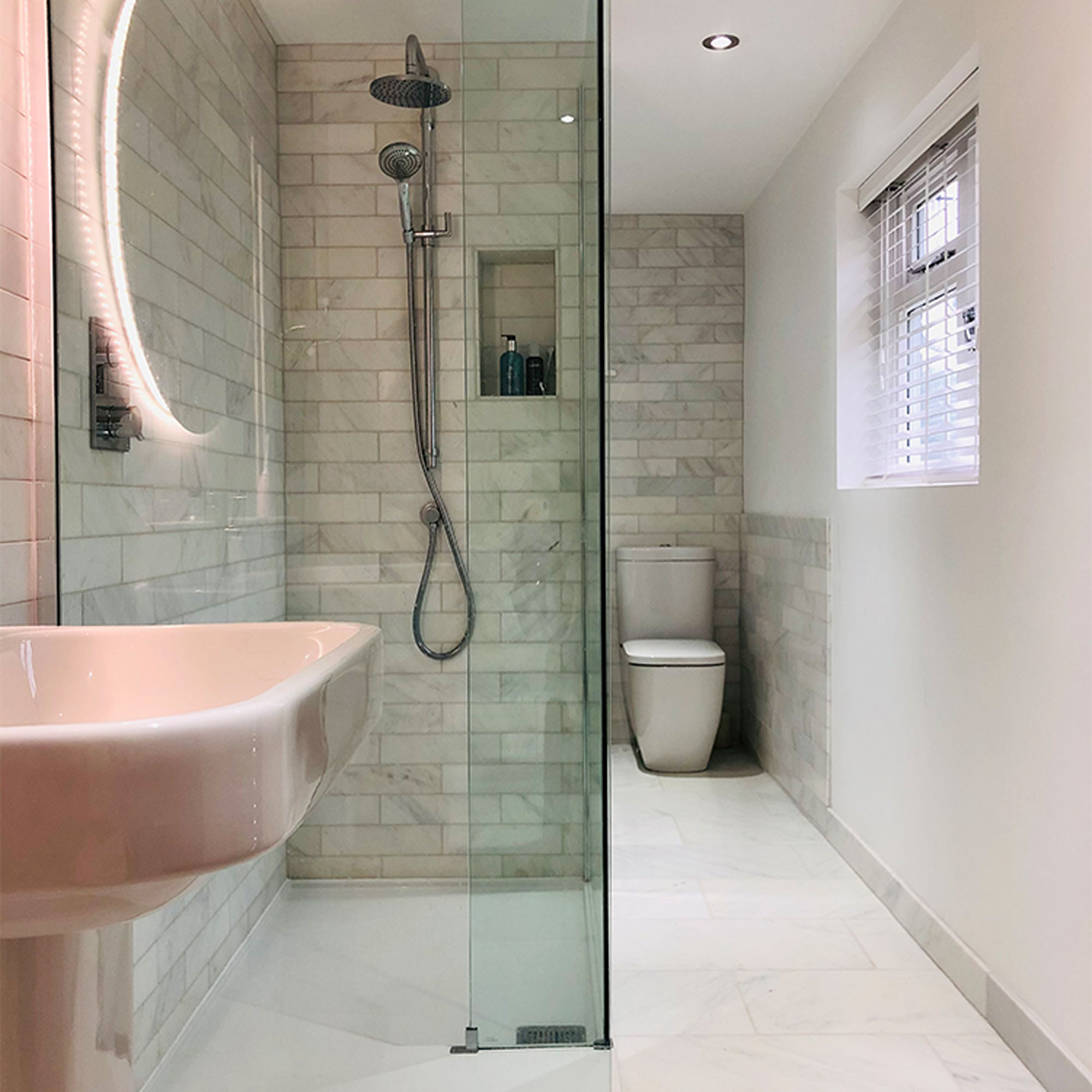
For any kind of bathroom ideas to work well, great ventilation is so important. Not only does it help prevent mould, but it also keeps the air feeling fresh, protects finishes from damp and ensures everything dries out quickly after showering.
'Fit an extractor fan, particularly in poorly ventilated bathrooms, and ensure it is activated during use of the shower to reduce humidity,' advises Nicholas Cunild.
While you don't have to have a window in a wet room, if you can incorporate one into its design, even if in the form of skylights and rooflights, this will also help dry the space out quickly.
'If there is a window in the wet room then it is recommended to open this to allow fresh air to circulate and for moisture to evaporate,' adds Nicholas.
4. Install underfloor heating
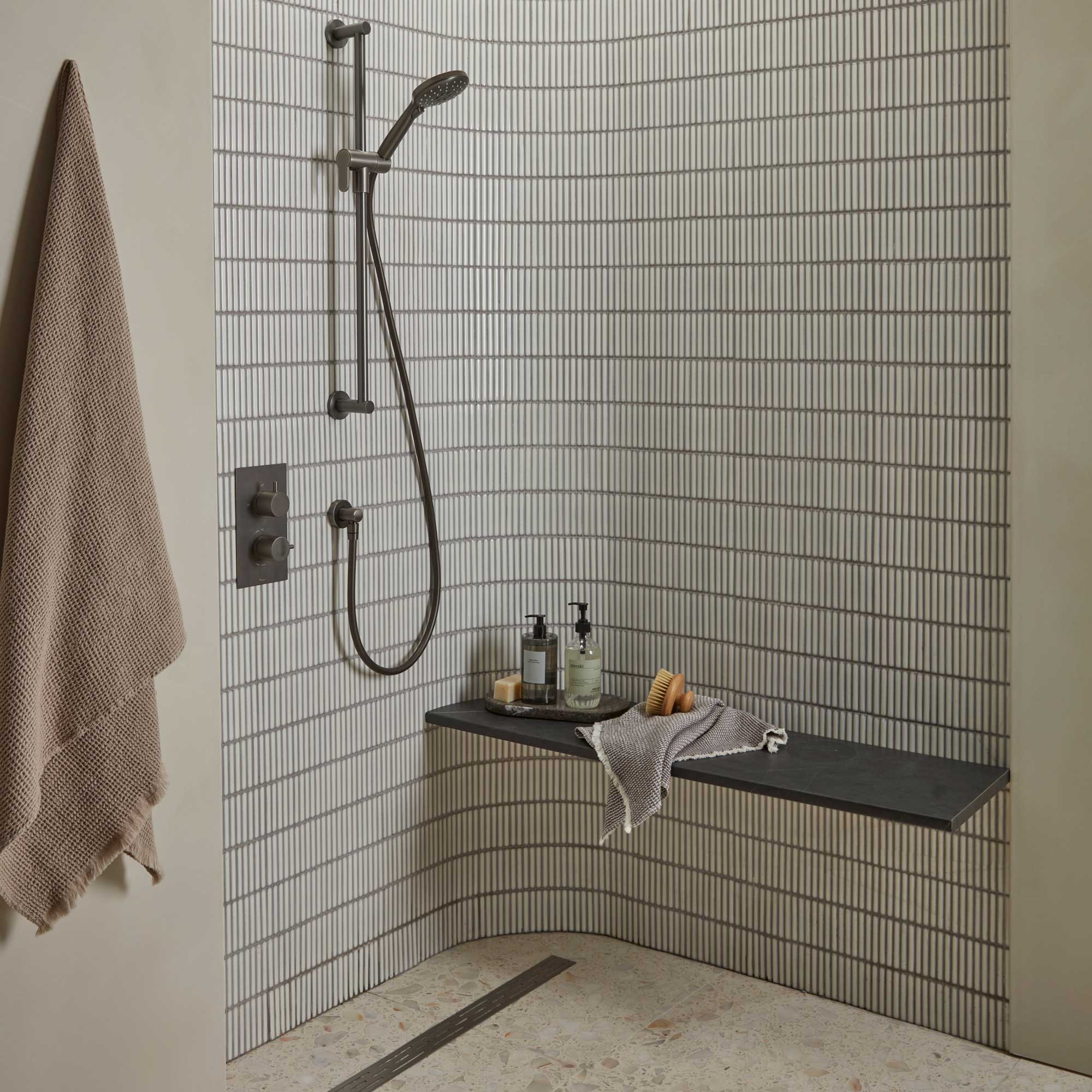
If you are starting from scratch with your wet room design, then you have the opportunity to install underfloor heating – and this is highly recommended.
Both wet systems and electric underfloor heating are good choices, although electric is easier to retrofit.
Not only will underfloor heating ensure the floor of your wet room dies out super quickly, but it will also keep the room at a nice even temperature and reduce the chance of mould.
5. Invest in a large, high-quality bathroom mat
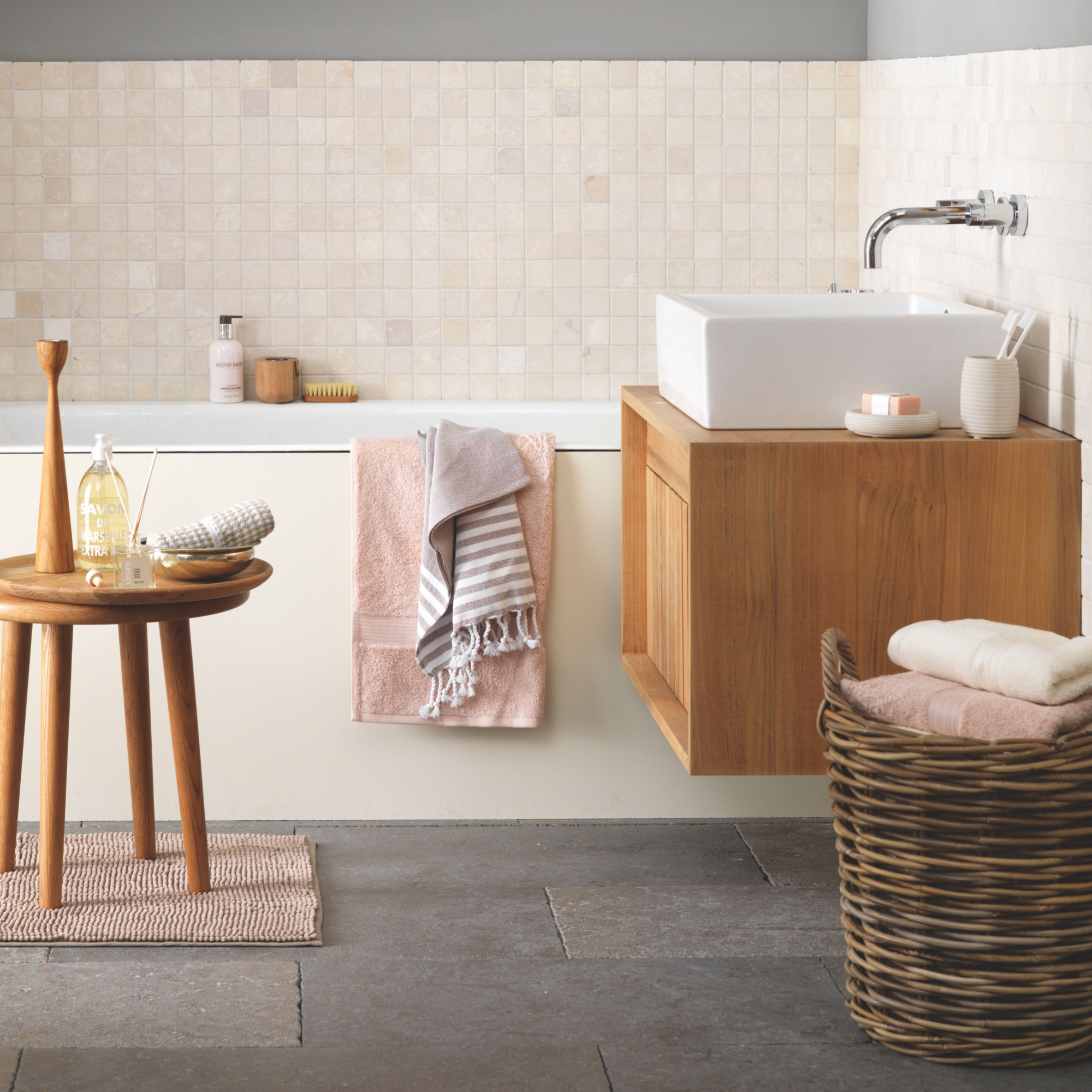
A generously-proportioned, super effective bath mat is essential for a wet room.
'Use absorbent mats near the showering and sink areas to reduce water pooling,' advises Nicholas Cunild.
When it comes to choosing a bath mat that is both absorbent as well as quick-drying, look for those that are lightweight. Mats made from brushed synthetic microfibres tend to be a good option for this. You might also like to look into alternatives to bath mats, such as wooden duckboards.
We love this on-trend scalloped bath mat from Dunelm that will look chic in any space.
6. Consider adding a shower screen to your wet room
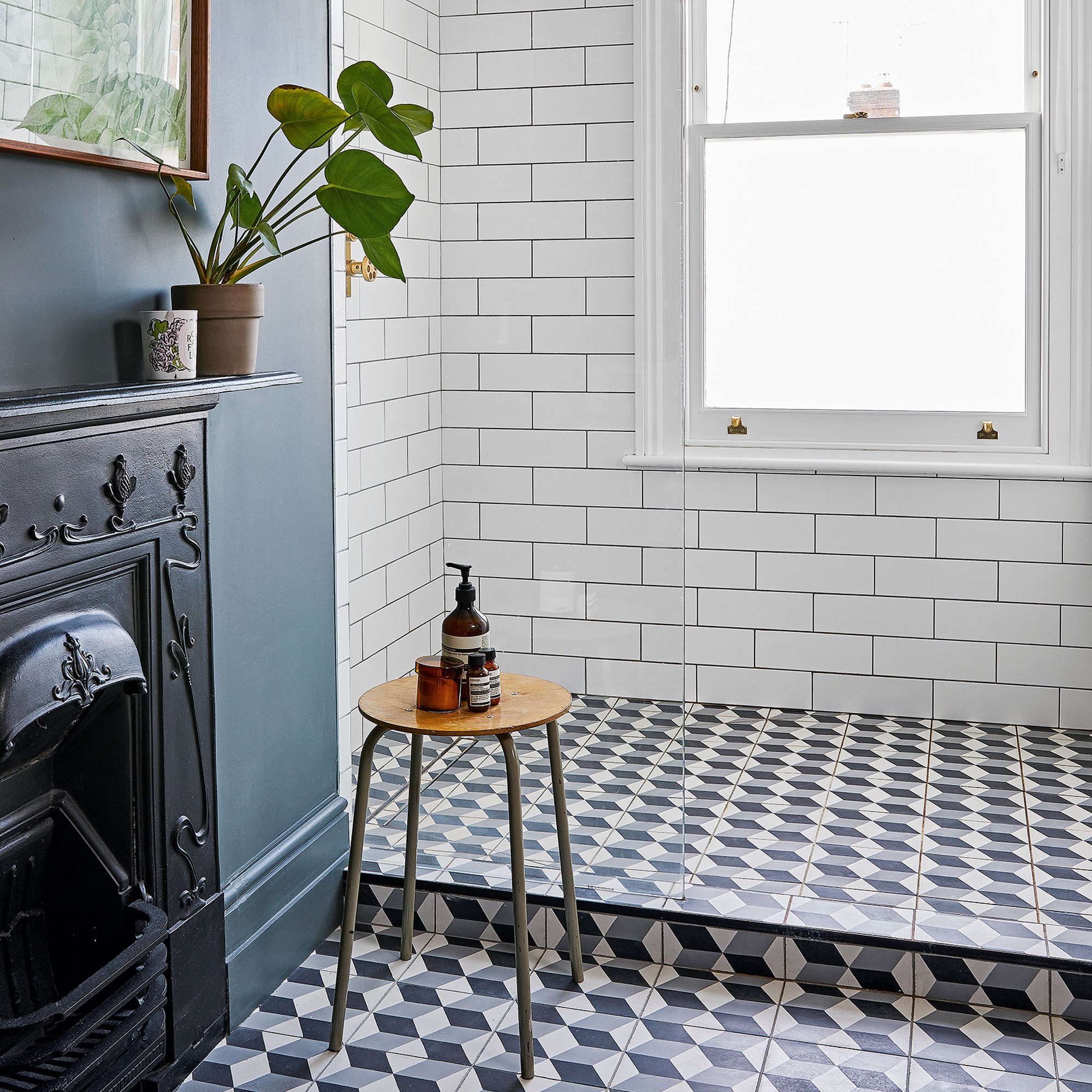
Strictly speaking, a well-designed wet room shouldn't need a shower screen, but fitting one can really help when it comes to preventing spray from reaching the rest of the space, ruining your shower room ideas.
'Technically a shower screen isn’t essential in a wet room but there are some benefits to installing one, including water containment, and protection of other items in the room such as a basin or vanity unit.' explains Shamila Iqbal. 'Additionally, a screen can help to keep the heat within a showering area making it more comfortable during the winter months. In small bathrooms or ensuites where space is at a premium a single glass panel will provide a stylish and functional compromise.'
7. Keep on top of moisture
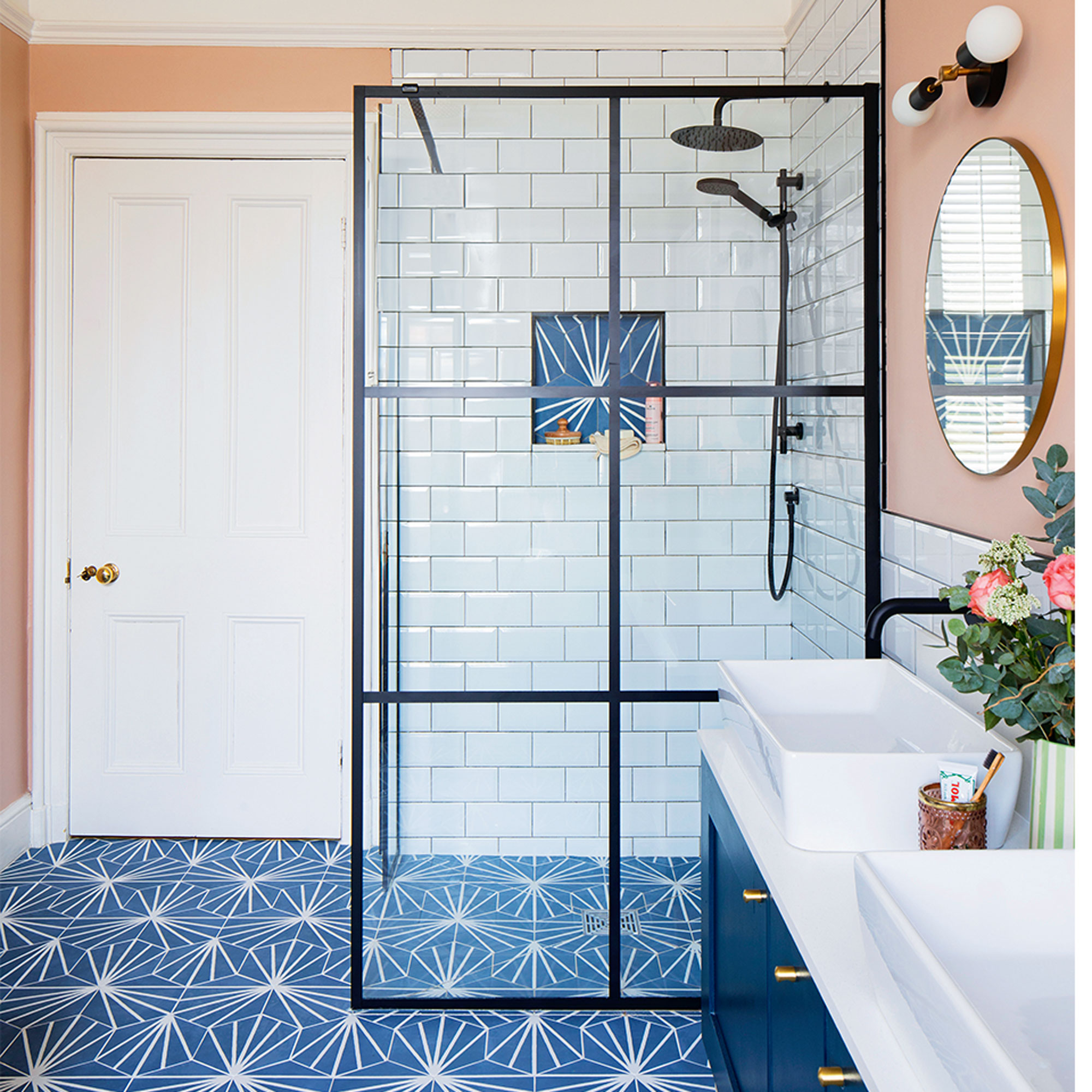
There are some easy steps you can take to keep your wet room dry too, including dealing with excess water swiftly.
'Regular cleaning and use of a squeegee post shower will help to remove excess water from tiled surfaces which also helps to minimise water pooling,' points out Nicholas Cunild.
You might even like to pop a houseplant or two into your wet room – they not only add a nice touch of green, but, take some time to research the best plants for reducing condensation and damp, and they can also help control humidity.
'House plants are a great way to liven up your space and can help to absorb excess moisture, preventing the build-up of mould,' confirms Kerry Hale. 'They can also help to improve the air quality in your bathroom.'
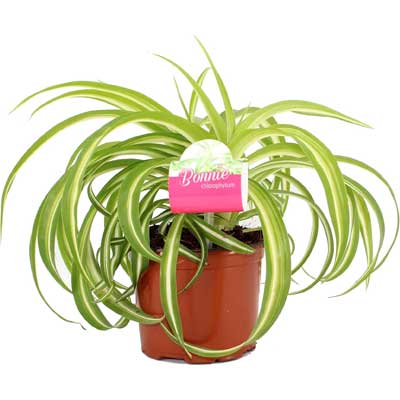
Spider plants are not only really easy to care for, they also work hard to improve air quality and can even help reduce excess moisture in bathrooms. This one is a good size and would look great in a hanging pot.
FAQs
What type of tiles are best in a wet room?
Your bathroom tile ideas need to be chosen carefully when it comes to wet rooms, particularly for the floor.
'If you are tiling your wet room floor the tiles should have non-slip properties and be applied sloping towards the drain with a suitable flexible adhesive and grout,' explains Shamila Iqbal.
'It’s best to opt for non-porous porcelain or ceramic tiles or sheet vinyl,' adds Kerry Hale. 'Stone tiles, such as marble and granite, will need to be continuously resealed every few months to keep them waterproof.'
While wet rooms are a brilliant idea in all kinds of spaces, they work particularly well for those after small bathroom ideas due to the fact that they do away with any form of enclosure which would take up extra space.
Get the Ideal Home Newsletter
Sign up to our newsletter for style and decor inspiration, house makeovers, project advice and more.

Natasha has been writing about everything homes and interiors related for over 20 years and, in that time, has covered absolutely everything, from knocking down walls and digging up old floors to the latest kitchen and bathroom trends. As well as carrying out the role of Associate Content Editor for Homebuilding & Renovating for many years, she has completely renovated several old houses of her own on a DIY basis.
You must confirm your public display name before commenting
Please logout and then login again, you will then be prompted to enter your display name.
-
 I tried Gozney's new Tread pizza oven – it's ultra-thin pizza stone means it heats up seriously fast
I tried Gozney's new Tread pizza oven – it's ultra-thin pizza stone means it heats up seriously fastThe much-awaited portable oven from the brand has arrived. But is it any good? I tested it to find out
By Molly Cleary
-
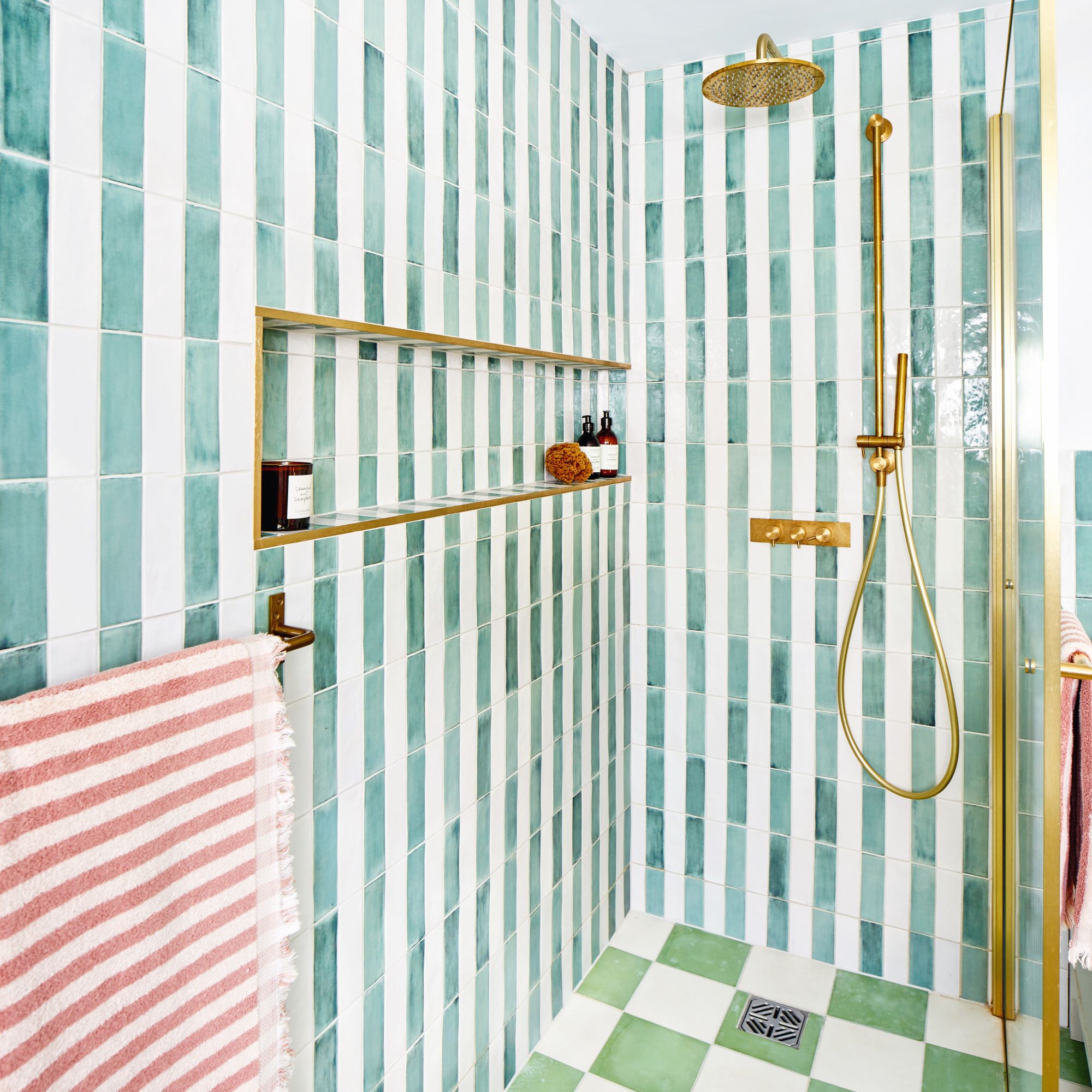 Is a shower ledge better than a shower niche? I asked bathroom experts why this storage option reigns supreme
Is a shower ledge better than a shower niche? I asked bathroom experts why this storage option reigns supremeIt's the best way to store your shampoo and conditioner stylishly
By Holly Cockburn
-
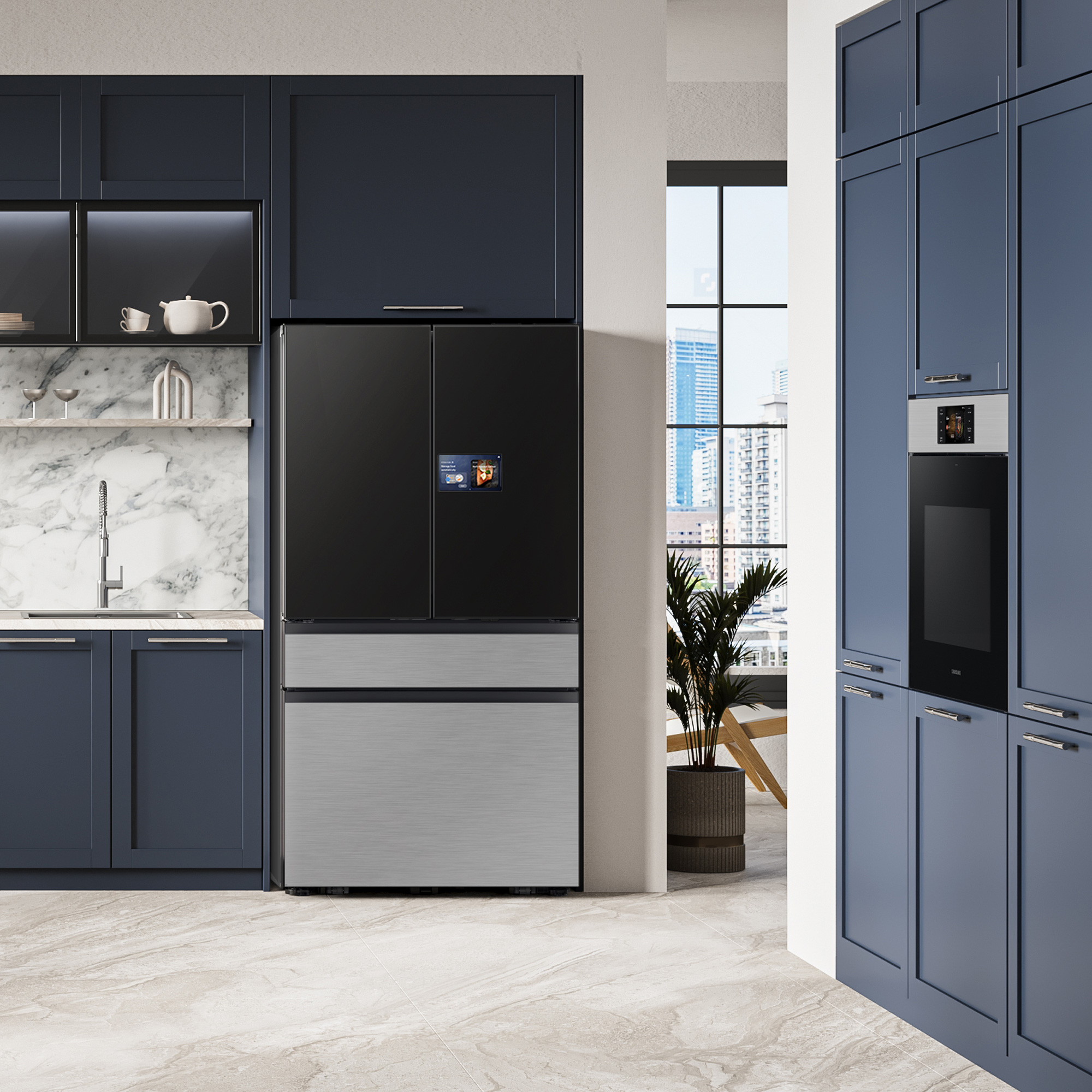 AI is heading into the kitchen – should you be considering upgrading to a smart appliance?
AI is heading into the kitchen – should you be considering upgrading to a smart appliance?They claim to make your life easier, and daily chores more efficient
By Ginevra Benedetti